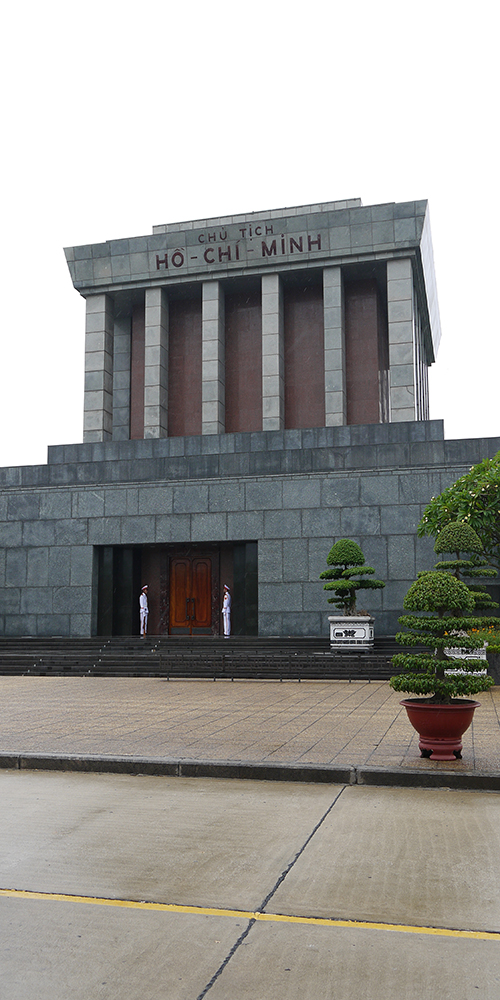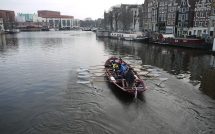
For decades while much of South-east Asia experienced a massive increase in international travellers, Vietnam – and especially Hanoi – suffered from a severe hangover of a violent and destructive war and countless years of government isolationism. However, things began to brighten with the USA under the presidency of Barak Obama when once frosty relations between America and Vietnam began to normalise and US businesses such as Coca-Cola began to reignite foreign investment.
Today, Hanoi is a bustling city of millions and is pretty much in the same vein as most other major cities in the ASEAN bloc except for the fact Hanoi lacks any major skyscraper. This does nothing to diminish the Asian-ness of the city or its appeal to visitors from near and far. Unless you are planning to head to one of the country’s other major northern tourist destinations such as Halong Bay and Sapa, then a three-night stay in downtown Hanoi is a fantastic option and one that is sure to open your eyes if you’re a first-time visitor.
The Old Quarter in Hanoi is the perfect place for a short stay as it provides excellent accommodation to suit any budget, sublime dining of international and local cuisine, plus easy walking distances to all the city’s major tourist attractions. Here you’ll find alleyways that appear desolate during the day but at night spring into life with makeshift market stalls selling everything from fake designer ware to locally produced goods. It’s also a brilliant place to try your hand at Vietnamese street food, which abounds at seemingly every corner.
Getting around central Hanoi is a piece of cake, but you could opt to joust with the locals and hire a motorbike if you’re feeling brave, but it really is much more fun to explore the city on foot. Slowly navigating the boulevards and side streets affords you with a close up of the real Hanoi where entrepreneurs’ businesses splash out on to the pavement before your very eyes and where secret gardens lay waiting to be discovered.
The major draw to Hanoi though is undoubtedly the shrine to the nation’s eternal leader, Uncle Ho or more formally Ho Chi Minh. A massive mausoleum honouring his legacy dominates the grand plaza – Ba Dinh Square – and visitors must be careful to respect the seemingly petty rules of not stepping over the white lines that surround president Ho Chi Minh’s final resting place. Ba Dinh Square is also home to several other important buildings such as the President’s Palace, the Ministry of Foreign Affairs, and the National Assembly Building.
From the grand plaza it is a short stroll to the One Pillar Pagoda, an iconic Buddhist temple that was originally erected in 1049 by Emperor Ly Thai Tong, considered one of the greatest kings and emperors in Vietnamese history. Designed to resemble a lotus blossom, it was rebuilt in the 1950’s after being destroyed by the French Union forces during the First Indochina War. This temple and its beautiful gardens symbolise Vietnam’s long history and is a wonderful place to sit and contemplate this nation’s long and chequered past.
Not far from the One Pillar Pagoda is the Citadel, the old centre of Hanoi and the former residence of Vietnamese monarchs. Like much of the country’s ancient architecture, the Citadel has been almost obliterated and only small sections remain today. However, even with these fragments of insights into the former layout it is clearly evident that Vietnam one thousand years ago was a sight to behold.
If you’ve been pounding the pavements since early morning, right around now you’ll be ready for something to eat and there’s nothing better to feast upon than what many consider to be the national dish: a bowl of Pho noodles. Like many things in Vietnam, the history of this dish has been lost to antiquity, but thankfully the taste remains delicious. In fact, it has been said by many a traveller that staying in the Old Quarter you could eat out for two weeks in a row without having the same meal twice.
After dark a romantic location and trendy hangout is Hoan Kiem Lake, often referred as the Lake of the Restored Sword. This really is a masterpiece of Hanoi’s culture and history and locals and tourists alike flock to it just to be amazed. Originally constructed as a university in 1070, the lake depicts true Vietnamese style in a traditionally crafted architecture and gives visitors the chance to see a number of other sites including the Well of Heavenly Clarity, pavilions, turtle steles, passageways, courtyards and more.
An evening in Hanoi would not be complete without a visit to the Hanoi Opera House, a building modelled on the Palais Garnier, the oldest opera house in Paris. Designed and built by French colonials between 1901 and 1911, the opera house is certainly one of the best types of colonial French architecture in the city that still exists today.
In days gone by the opera house was used as a nationalistic tool but today it is possible to see mainstream performances by Vietnamese and international performers. The National Ballet is also part of the Hanoi Opera House and stages Western classics such as Swan Lake as well as traditional and modern Vietnamese dance productions.
Obviously for many, Vietnam rekindles memories of the much-maligned war with America. While there are numerous monuments to the nation’s history and its affiliation with the former Soviet Republic, one remnant of the Vietnam War is Hoa Lo Prison or the Hanoi Hilton as it as sarcastically labelled by American prisoners of war. Perhaps its most famous inmate-cum-prisoner was the late John McCain, a former presidential nominee who spent more than five years in captivity here. Today, all that remains of the century-old prison is the gatehouse, a harrowing reminder of the depths this amazing country has plumbed in its long history.
Visitors today are accorded a much warmer welcome than those who came by air and sea many years ago with the intent of changing the cosmetics of a nation steeped in history but lacking the political savvy of its ASEAN neighbours. Now, the only danger that a tourist might face is crossing a busy thoroughfare where motorbikes rule the roost and pedestrians take their chances.


